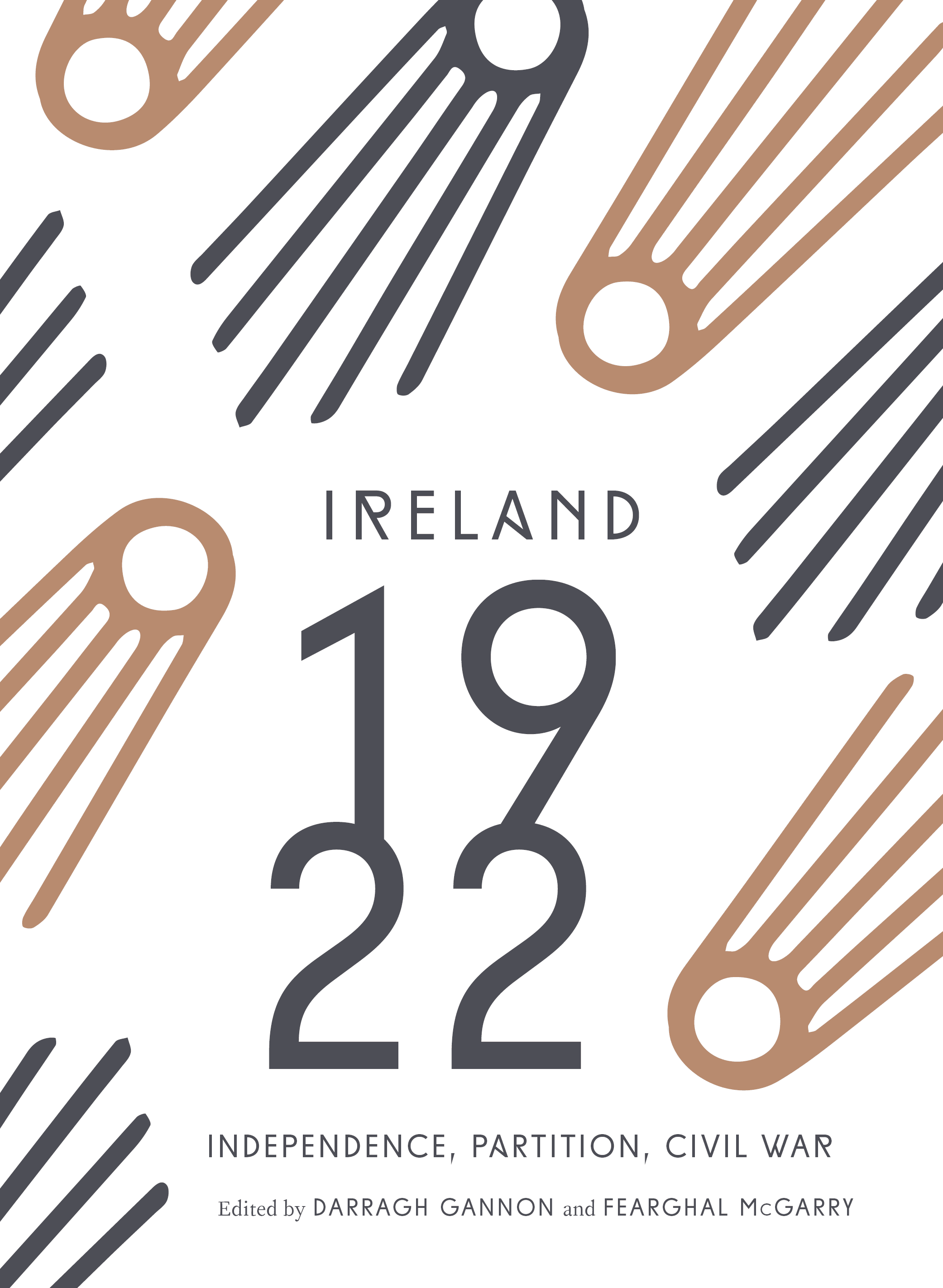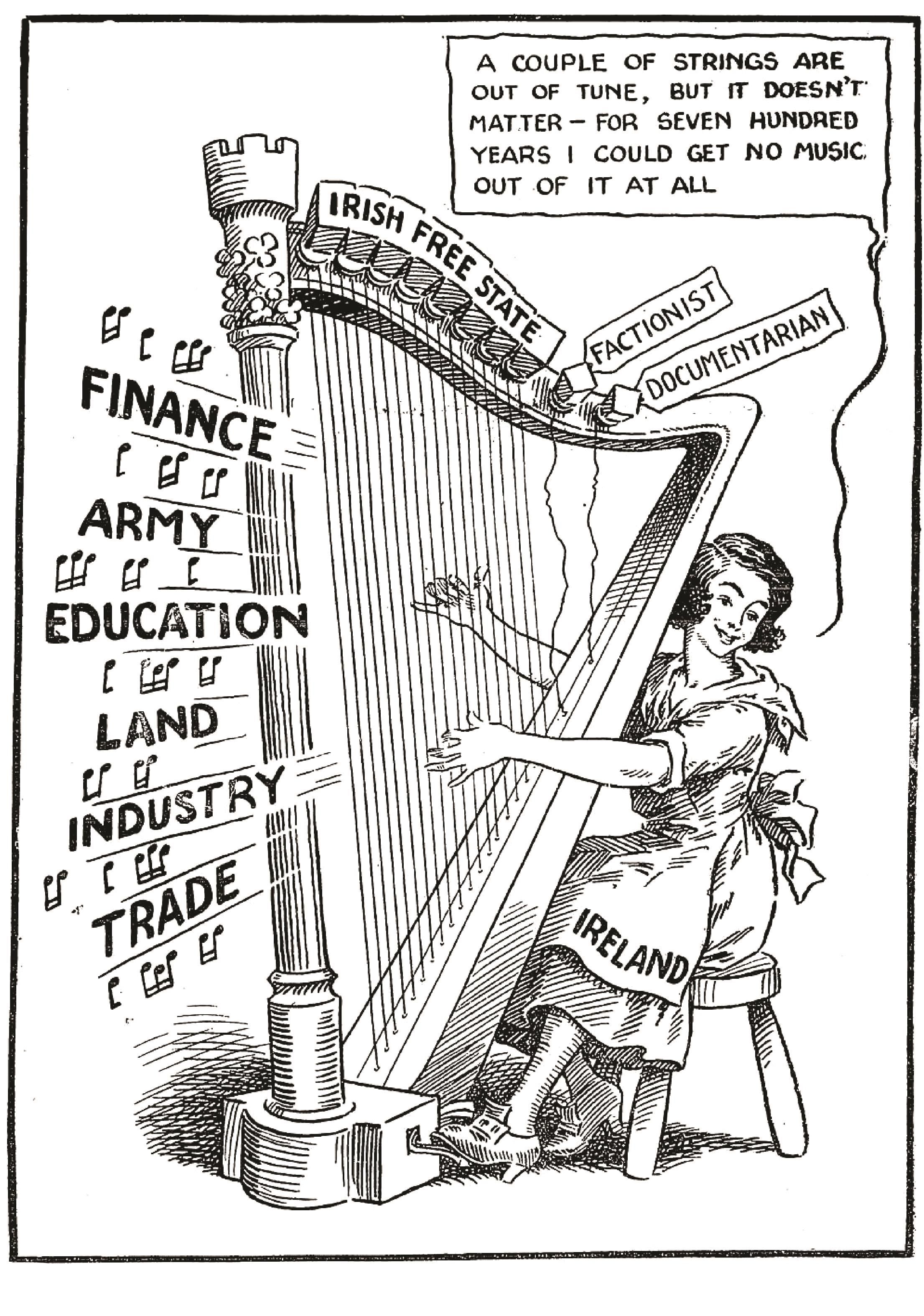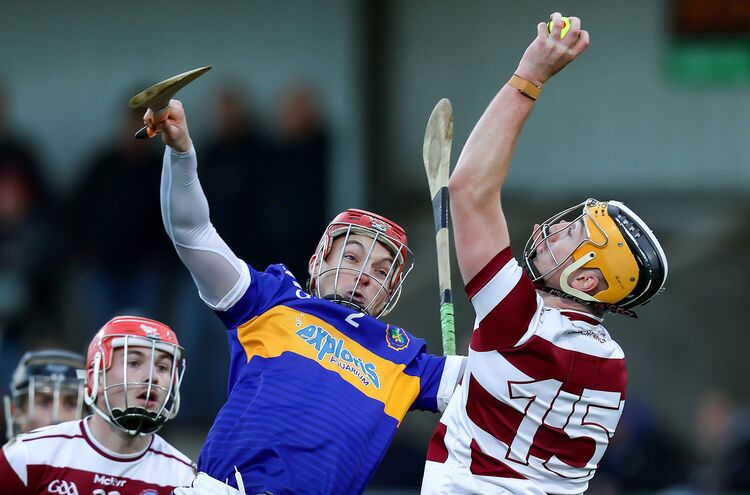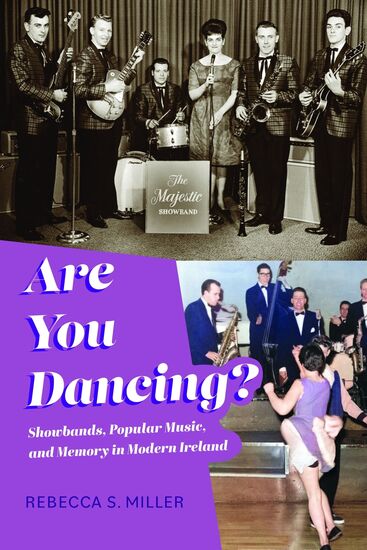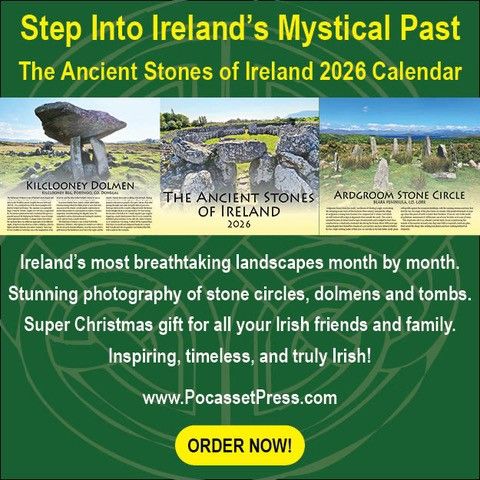“Ireland 1922,” published by the Royal Irish Academy, is comprised of 50 essays from 50 contributors, who each focus on an aspect of an extraordinary year, which saw the handover of Dublin Castle, the creation of a new border across the island, the divisions of the civil war and the building of a new state as the Irish revolution drew to a close. In his essay reproduced here, Richard Bourke writes that the "Dáil debates on the Treaty followed an intense period of intellectual contestation spanning over a decade in Ireland during which writers and publicists addressed a range of fundamental issues."
The “Articles of Agreement for a Treaty between Great Britain and Ireland” were signed at Downing Street on 6 December 1921 by the British delegation along with five Irish representatives enjoying plenipotentiary status.
Before ratification, the terms of the treaty were debated in sessions of the second Dáil convened at Earlsfort Terrace in Dublin over fifteen days between 14 December 1921 and 7 January 1922. In the end, approval of the agreement passed by a margin of seven votes, though civil war rather than national concord ensued.
One of the most controversial issues—arrangements for Ulster—had at least provisionally been settled in advance of the debates by an agreement to provide for the establishment of a boundary commission that would decide on the character and viability of Ulster as partitioned following the creation of Northern Ireland in 1920. That left relations between Ireland and the empire as the principal issue in contention when delegates gathered.
Most controversial was the maintenance of an oath of allegiance to the British Crown under article 4 of the Treaty, together with the retention by Britain of naval facilities in certain Irish ports as set out in the annex. Nonetheless, most contributors to the debates were agreed about one issue: the legitimacy and desirability of securing a republic.
The only question was the means of achieving that objective. In entering into treaty negotiations with the British, the Irish side had implicitly conceded a measure of compromise. As Michael Collins himself put it: “it was the acceptance of the invitation that formed the compromise.”
It remained to be established, however, what might have to be bargained away. After the settlement, since the immediate establishment of a republic was forlorn, the question was whether the plenipotentiaries had yielded too much.
The Dáil debates on the Treaty followed an intense period of intellectual contestation spanning over a decade in Ireland during which writers and publicists addressed a range of fundamental issues. These included the role of religion, economic relations, social structure, the character of the family, constitutional arrangements and the franchise.
Discussion was therefore certainly not narrowly focussed. Equally, it took many forms—from fine art and the handbill to the article and the monograph. Commentary about Ireland from outside the country resulted in some significant works, such as Louis François Alphonse Paul-Dubois’s “L’Irlande contemporaine” (1907) and A.V. Dicey’s “A fool’s paradise” (1913). There were also notable studies by Irish thinkers: George Russell’s “Nationality and imperialism” (1901), Horace Plunkett’s “Ireland in the new century” (1904), Arthur Griffith’s “The resurrection of Hungary” (1904), D.P. Moran’s “The philosophy of Irish Ireland” (1905), Alice Stopford Green’s “Irish nationality” (1911), T.M. Kettle’s “The open secret of Ireland” (1912), Erskine Childers’s “The framework of home rule” (1911), Roger Casement’s “The crime against Ireland” (1914), James Connolly’s “Labour in Irish history” (1914), Robert Lynd’s “Ireland a nation” (1919), Lyndsay Crawford’s “The problem of Ulster” (1920), Stephen Gwynn’s “The Irish situation” (1921) and Ronald McNeill’s “Ulster’s stand for union” (1922).
In addition, numerous important pamphlets appeared and a considerable volume of journalism by, among others, Helena Molony, Patrick Pearse, Constance Markievicz, Hanna Sheehy Skeffington, Eoin MacNeill and Louie Bennett. As the titles above suggest, the relationship between Britain and Ireland was a major concern. By extension, so too were constitutional structures and the question of national jurisdiction.
These latter themes pervaded the fraught exchanges between TDs on the Treaty. While a large majority of the 124 protagonists in the Dáil remained faithful to the same goal, they divided on which concessions entailed defeat for their shared ambition. De Valera asserted on the opening day of proceedings that the “honour of this nation, which is dear to us, is at stake.”
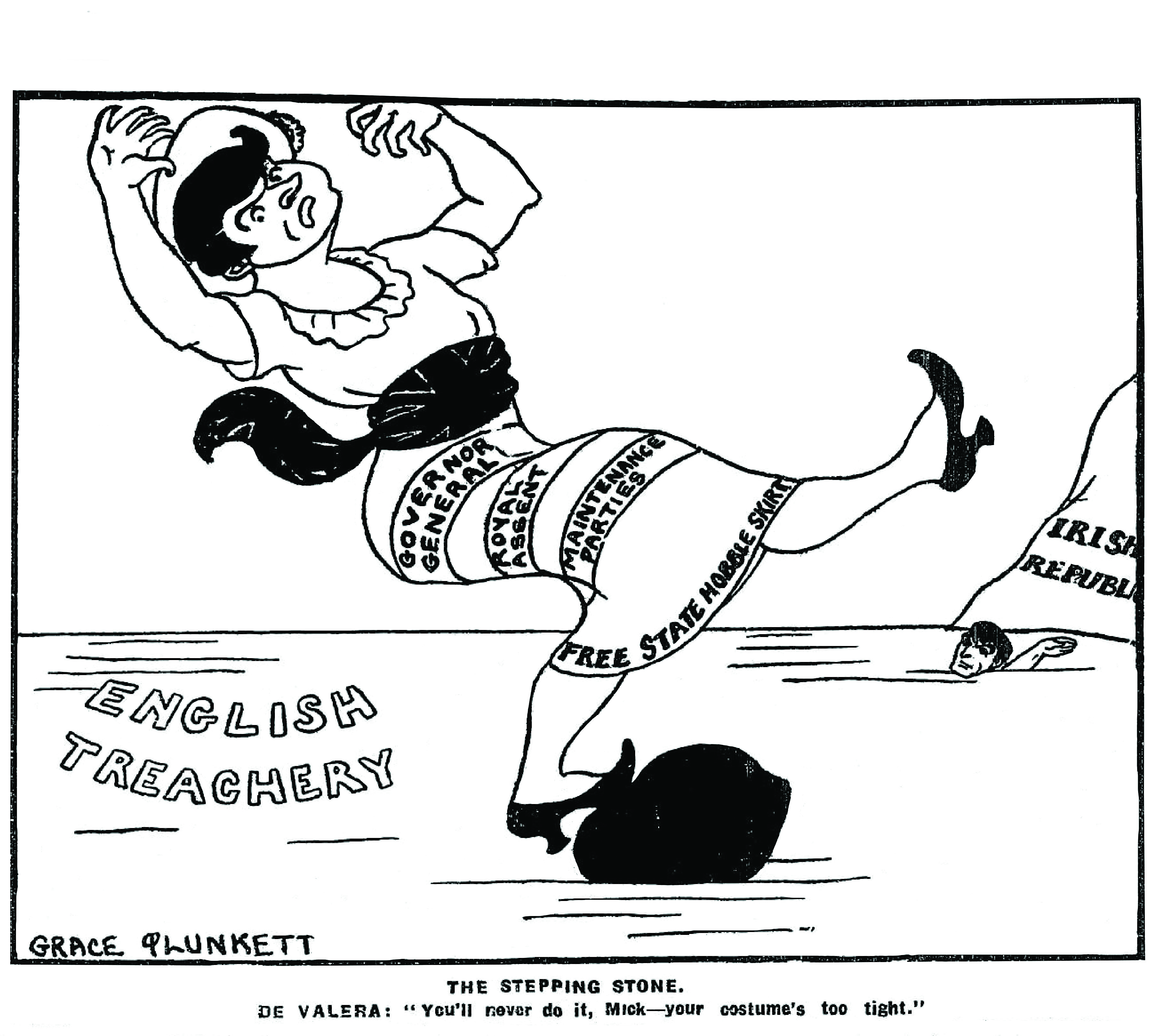
A cartoon by Grace Gifford Plunkett published in the Plain People, April 23, 1922.
Indeed, the value of “honour” was frequently invoked by TDs, suggesting that the dilemma involved fidelity to an ideal. Yet the real question was the extent to which deviation from that ideal threatened to undermine its integrity altogether. The achievement of a republic implied independence, although what this meant was subject to divergent interpretations. “What I want, what the people of Ireland want, is not shadows but substances,” remarked Seán Mac Eoin, seconding Arthur Griffith’s motion in support of the Treaty.
But what exactly was the “substance” of independence? Famously, for Michael Collins, it meant the freedom to achieve freedom: ‘In my opinion it gives us freedom, not the ultimate freedom that all nations desire and develop to, but the freedom to achieve it.’
De Valera likewise accepted that the negotiations could not have delivered “freedom” in the sense of complete autonomy or an isolated republic. Yet, he believed, they could have brought about a form of imperial “association” that was at least compatible with genuine self-government. De Valera spelt the details out in what was referred to as “Document No. 2.” In it, he sketched a form of external association with the British Commonwealth that prioritised domestic autonomy and the right to self-defence. Erskine Childers advocated this potential set-up by urging: “Establish that principle that authority in Ireland belongs solely to the Irish people, then make your association, and the rights of Ireland are safe.”
The oath of allegiance seemed to the opponents of the Treaty to undermine this basic principle. Supporters of the Treaty had described what had been achieved as a form of “dominion status,” in accordance with article 1 of the Agreement. This was expected to place the Irish Free State on a par with Canada and Australia. Yet Childers was anxious to explode the analogy: Ireland was a small neighbour geographically bound to Britain, whereas Canada was a sizeable portion of a remote continent, amounting to an “immense nation, absolutely unconquerable by England, and, what is even more important, attached to England by ties of blood.”
Two days later, in a speech that lasted over two and a half hours, Mary MacSwiney reiterated Childers’s assessment, and proceeded to reaffirm what she thought of as the fundamental republican position: she, like her comrades, stood on “principle,” proclaiming an essentially “spiritual ideal.”
She observed that the Treaty represented the culmination of Griffith’s ambitions, although for Collins it remained only a stepping-stone. In either case, she refused to impugn her opponents’ honour, although she did question their intelligence and their command of history. It had always, she claimed, been a minority who redeemed the soul of the nation, as demonstrated by the 1916 Rising. The will of that minority could never be broken, for even if England should exterminate “the men, women and children of this generation, the blades of grass, dyed with their blood, will rise, like the dragon’s teeth of old, into armed men and the fight will begin in the next generation.”
Yet it transpired that the fundamental truths of republican doctrine were at the same time represented by other voices articulating divergent programmes. For Constance Markievicz, along with MacSwiney, this had been a fight against the fleshpots of temptation. Yet, while the fundamental problem for MacSwiney had been the “rapacious and material Empire” of the British, for Markievicz it was capitalist exploitation, which called for the establishment of a “co-operative commonwealth.” Along with its establishment would come the abolition of luxury, as well as an end to the “divorce laws of the English nation.”
Yet even MacSwiney’s most ardent antagonists affirmed as a fact what she claimed as an aspiration: under the Treaty itself, Liam de Róiste insisted, ‘The right of Ireland to national freedom is recognised’.
To view the Treaty debates as driven by radically competing ideals is largely mistaken. Instead, divisions were fomented by rival strategies, whose partisans presented them as incompatible principles. “[W]e Republicans are going to carry out this fight,” announced MacSwiney. “[D]eath is preferable to dishonour,” Markievicz declared. The treatyites, in due course, opted to join battle.
Richard Bourke is professor of the History of Political Thought and a fellow of King’s College at the University of Cambridge. He has published on the ideas of the Enlightenment and on modern Irish history. His publications include “Peace in Ireland: the war of ideas” and “Empire and revolution: the political thought of Edmund Bourke.”
